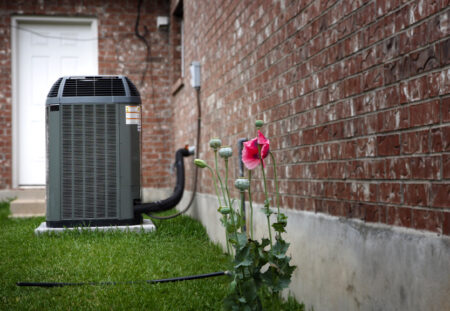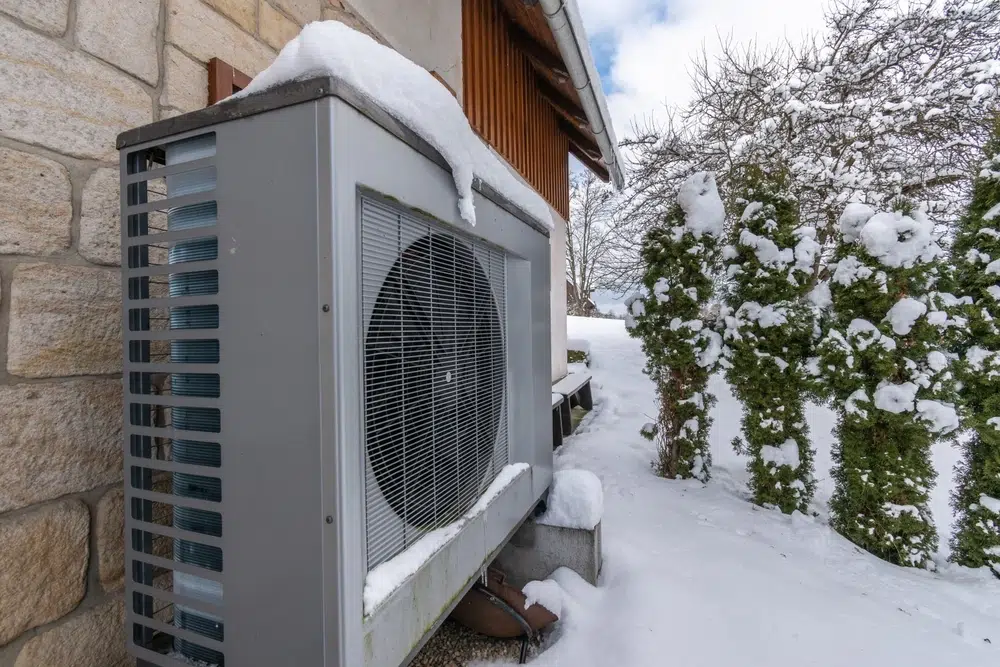Consumer-grade smart devices for the home didn’t come to market until the early 2000s. The initial criteria for whether a device was smart was that it could connect to a home network. Today’s consumer expects a lot more from their smart technologies. The industry is working to meet that demand and is on the verge of transforming home comfort through smart HVAC technology integration.
Even Smarter Thermostats
Advancements in smart thermostats are already significant, but this is only the beginning. In the future, many thermostats will have integrated humidity control and indoor air quality monitoring. The industry expects more widespread adoption of machine learning and artificial intelligence. This will make it easier to integrate them into the home automation system. Weather prediction and environmental sensing will be more prevalent as well. Consider a thermostat that receives notification of an upcoming temperature drop and can preheat the home. In addition, several of the major brands will soon offer biometric integration and are working on augmented reality interfaces.
Remote Access and Control
Remote access and control to your home’s HVAC system will continue to become more advanced. In particular, the notification and alert systems will be even more sophisticated. Your smart HVAC system will notify you of necessary maintenance and dips in energy efficiency. You’ll also be able to communicate with your system much more conveniently and casually. Rather than peruse an alert checklist, you’ll simply be able to tell the system what alerts you want.
Powerful Voice Assistants
Voice control is one way you’ll be able to communicate more casually. Some of the top brands have already introduced smart thermostats that integrate with Alexa, Google Assistant, and Siri. You can also expect smart thermostats that have onboard voice assistants. Some industry experts believe homeowners will appreciate that their thermostat has a distinct voice and manner. You’ll be able to talk with your thermostat to set temperature, adjust humidity, change programming, and more.
Remote Sensors
Remote sensors are already available at the high end of thermostat product lines. As this equipment continues to become more affordable, it will also become more widespread. Multiple temperature sensors throughout a home give your system more accuracy. It also makes the primary installation location a lot less important. You’ll be able to add many different types of sensors, including humidity and indoor air quality sensors. Those could eliminate the need for separate smoke and carbon monoxide detectors.
HVAC Zoning
Zoning is the future of HVAC. A zoned home has a smaller carbon footprint and is more affordable to heat and cool. Adoption has been slow. This is because central zoning is relatively expensive, and even ductless zoning can be expensive for larger homes. Smart devices are now appearing on the market that could help. These include smart HVAC zone controllers that make variable-speed blowers more efficient, effective, and affordable. There are also smart vents that eliminate the need for in-duct dampers.
Improved Indoor Air Quality
Due to modern home-building techniques, there is a much greater focus on indoor air pollution. Smart whole-house fans, including smart heat and energy recovery ventilators (HRVs and ERVs), are now available to help with this. Homeowners will have the option of smart dehumidifiers and humidifiers. You can also expect smart air purification systems. Those include supply-side activated carbon filtration, UV lamps in the ducts, and return-side high-efficiency particulate air (HEPA) filtration. These devices will communicate with your thermostat and heating and cooling systems. They will also be able to alert you to filter change and maintenance needs.
Machine Learning
Scheduling is the most powerful tool a programmable or smart thermostat provides. With an optimal schedule, you can lower your heating and cooling costs by 15%. The challenge is achieving that optimal schedule. It’s easier said than done because life is hectic and prone to change. This is where machine learning comes in. Many thermostats on the market already have this feature, but the industry has only scratched the surface. The systems of tomorrow will learn your household’s habits and greatly optimize system performance.
Cloud-Based Services
Cloud computing allows for even more ways for machine learning to become more advanced. However, thermostats have limited computing capacities, which isn’t likely to change for the average homeowner in the near term and can affect function. The industry can overcome this minor hurdle by performing the number crunching on the cloud. You can already see this in action with some of the energy consumption reports that the big brands offer. That is possible because a server in the cloud analyzes all that information and builds the report.
Geofencing
Geofencing is already a popular thermostat feature and will continue to become more advanced. Through geofencing, the system can identify whether family members are home or not. This opens up many possibilities and eases the burden of accurate scheduling. When no one is home, the system can maximize itself for energy efficiency. It can also detect you on the commute home and get the house ready for you in a just-in-time manner.
Predictive Maintenance and Repair
The industry believes that predictive capabilities will soon have the biggest effect on HVAC lifespan and consumer costs. Predictive systems are already in use in large-scale commercial applications. The tech is close to being ready for home use, and some insiders expect widespread availability at some point during the 2030s. The EPA predicts that these features will also significantly reduce carbon footprint.
Opt-In Energy Programs
Opt-in energy programs are a relatively new concept enabled by smart thermostat technologies. Despite the novelty of these programs, they’ve been quite successful. How they work varies by region. By opting in, you give your electricity company some control over your thermostat. For instance, during peak load times, the company can adjust the temperature in your home by 1 to 3 degrees. That makes it easier and more affordable to handle the excessive load. In return, you get a monthly bill credit that helps you offset your energy costs. The consumer-grade equipment available currently limits these programs. Many major utility companies are investing in this tech and working with the HVAC brands to expand those capabilities.
Communication With Other Devices
A key feature of a smart device is the ability to communicate with other smart devices. These features are currently limited in the HVAC space, but that’s about to change. Refrigerators will soon be able to tell the AC, for instance, that the kitchen is too warm. You can also expect intra-HVAC communication, such as the AC sending data to the dehumidifier and smart vents sending data to the thermostat.
Trusted HVAC Company in Massachusetts
Endless Energy in Marlborough is proud to serve almost all of Massachusetts. Our HVAC technicians are current with the latest innovations in smart HVAC. We also install and service gas and electric furnaces, gas and electric boilers, air conditioners, heat pumps, and ductless mini-splits. Our team cleans and seals ducts, performs indoor air quality testing, and installs air purifiers. We perform home energy assessments and install insulation, too. Contact us today to learn more about these products and services or to schedule an appointment or consultation.






